The world contains about 18,000 species of bird, with more still being covered. Many are so well known, but what about one that’s a bit of an oddball, maybe even a coot?
When we see a bird that is quite unusual they tend to grab our attention, so much so we want to investigate more. And at face value the Coot tends to look like a fairly typical waterfowl, that is until you see their feet.
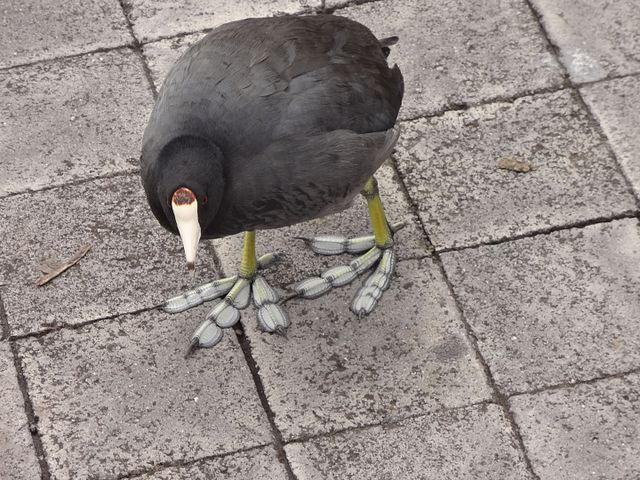
Photo Courtesy of Daani tru/ Creative Commons Attribution-Share Alike 4.0 International
The American Coot (Fulica Americana) or Mud Hen is a very unique bird. A medium-sized waterbird, they can often be found in lakes, ponds, marshes, and reservoirs. Many people often call them a cross between a chicken and a duck, as they tend to waddle on land more like a chicken and swim in the water like a duck.
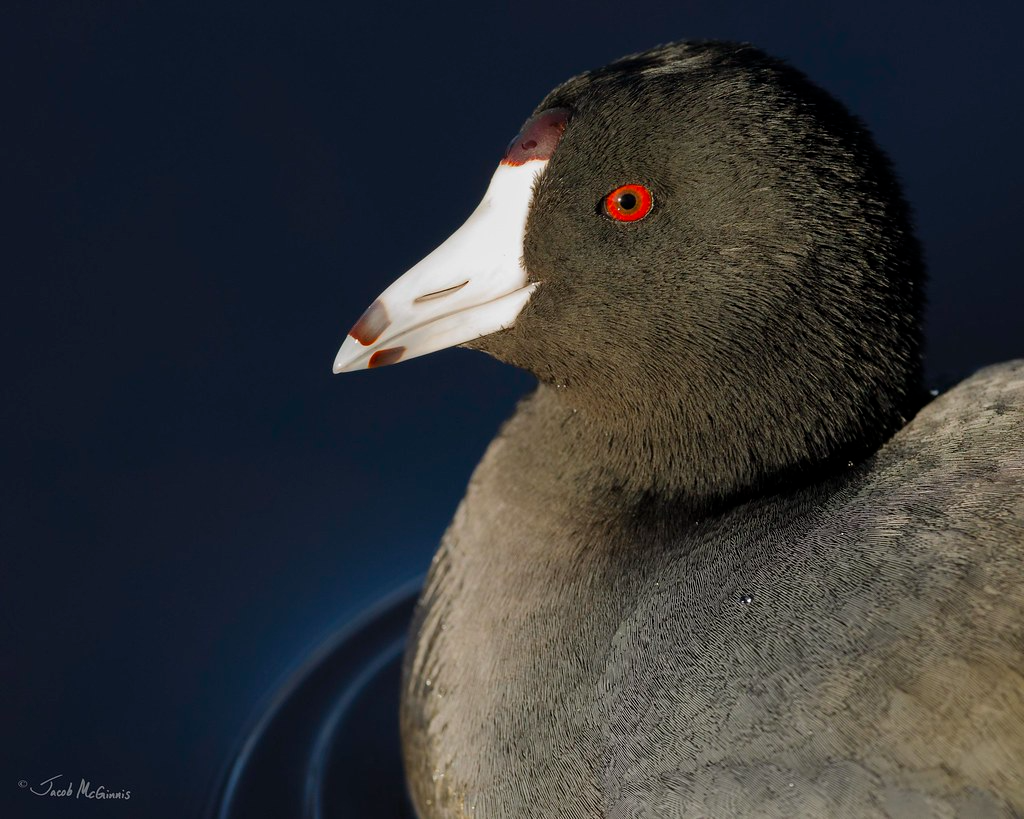
“American Coot (Fulica americana)” by Jacob McGinnis is licensed under CC BY-NC 2.0.
A migratory bird, they inhabit most of North America, being a non-breeding resident, often seen walking like a chicken on iced-over lakes and ponds.
Unlike the webbed feet of ducks, coots have broad lobed scales on their lower legs and toes that fold back with each and every step.
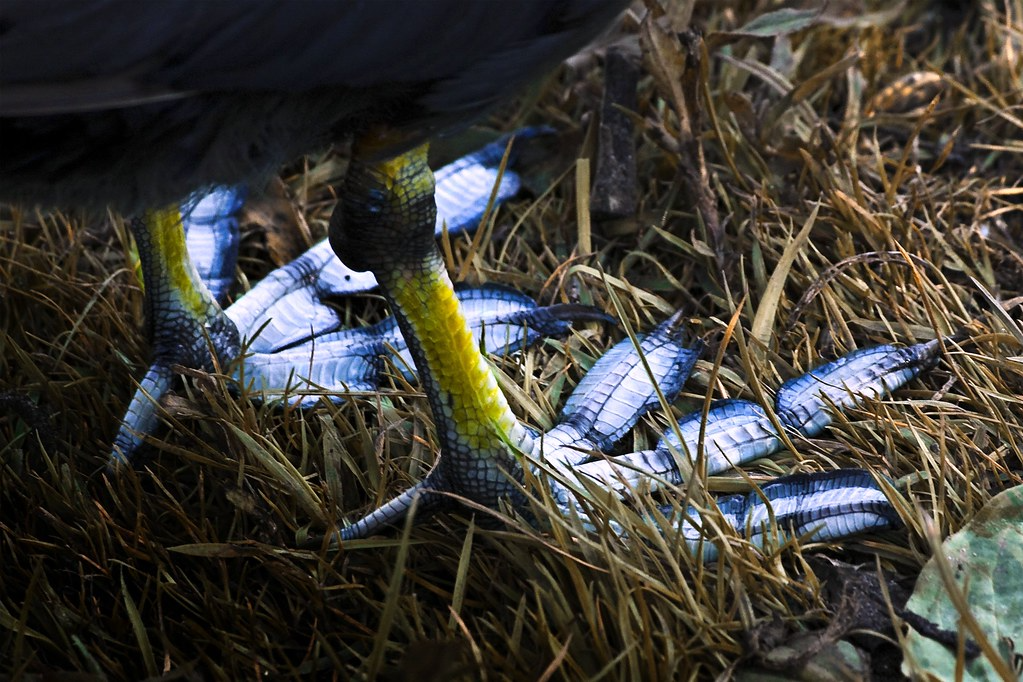
“Coot’s feet” by Tatinauk is licensed under CC BY-ND 2.0.
Not the most graceful of fliers, they need quite a long runway to take off, appearing to walk on water while they furiously flap their wings. Often seen hanging out with ducks, they do not sound like a duck.
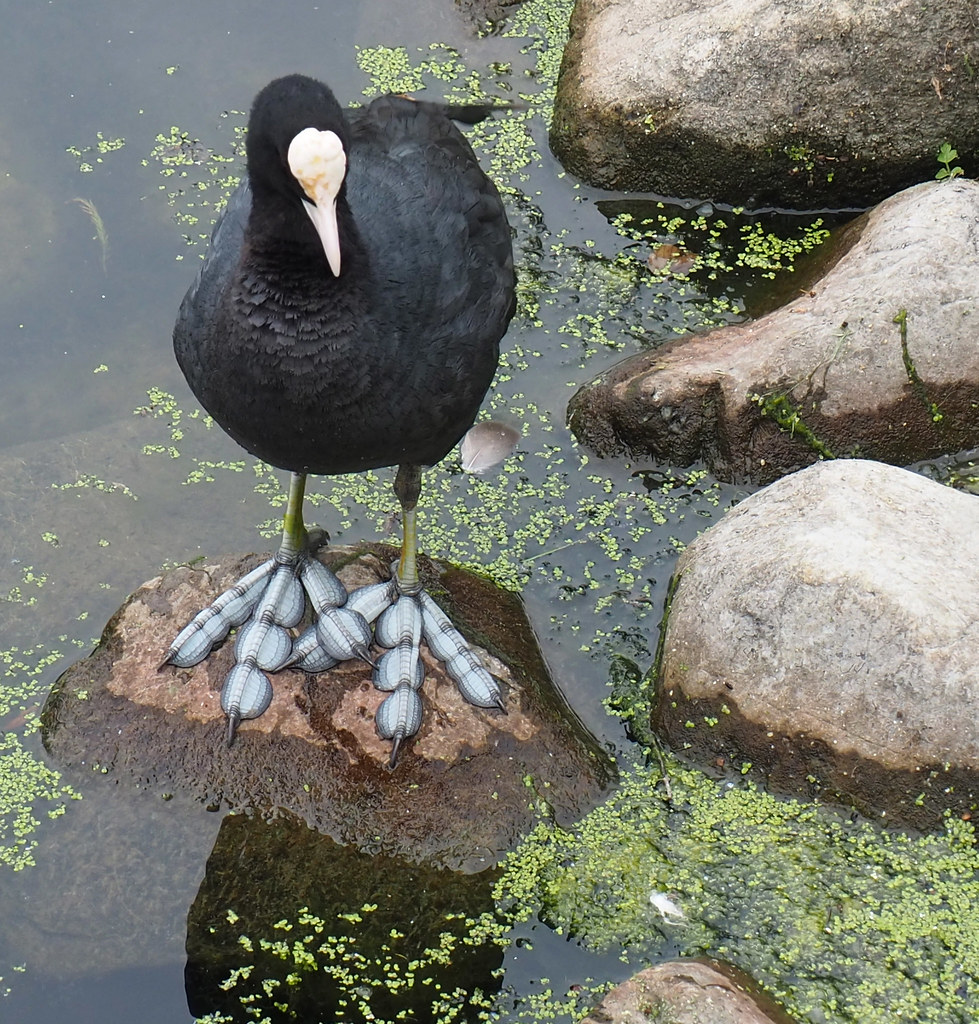
“Coot feet” by chericbaker is licensed under CC BY-NC-SA 2.0.
Coots are easily recognized by their sloping head and white wedge-shaped bill, red eyes, sometimes with a small red patch on their heads. they are closely related to Sandhill Cranes and Rails.

ratexla (protected by Pixsy) is licensed under CC BY-NC-ND 2.0.
Coots like to dine on aquatic plants such as algae, duckweed, eelgrass, sedges, hydrilla, wild rice, etc. However, they will also take insects, crustaceans, snails, as well as small vertebrates like tadpoles and salamanders.

“Mud Hen or American Coot (Fulica americana) feeding her baby” by Peggy2012CREATIVELENZ is licensed under CC BY 2.0.
One thing that is very interesting about this species is known as “conspecific brood parasitism.” This is when some hens lay their eggs in other hens existing nests.
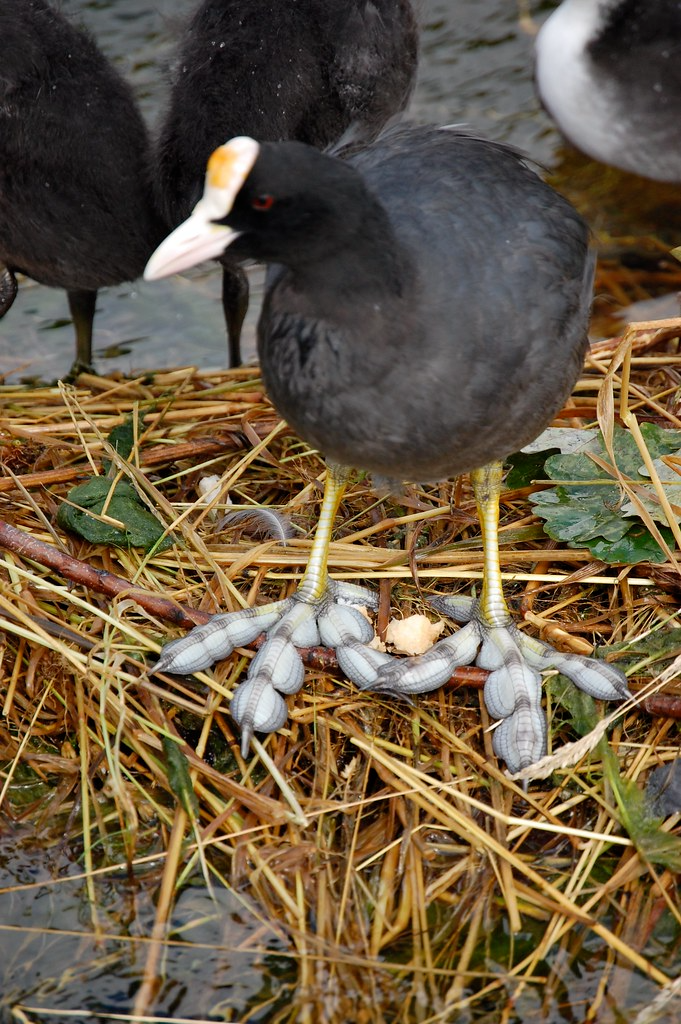
“DSC_0014” by unnormalized is licensed under CC BY-SA 2.0.
In one 4-year study, researchers found that 40% of nests were parasitized, and that 13% of all eggs were laid by females in nests that were not their own. Increasing reproductive success under social and ecological constraints is the primary reason for brood parasitism.

“File:Coot (Fulica atra) feeding its young – geograph.org.uk – 826320.jpg” by Evelyn Simak is licensed under CC BY-SA 2.0.
The first evidence for parental selection of exaggerated, ornamental traits in offspring was found in American coots. American coot chicks have conspicuously orange-tipped ornamental plumes covering the front half of their body that are known as “chick ornaments”, which eventually bleach out after six days. This brightly colored, exaggerated trait allows coot chicks to be selected by parental choice.
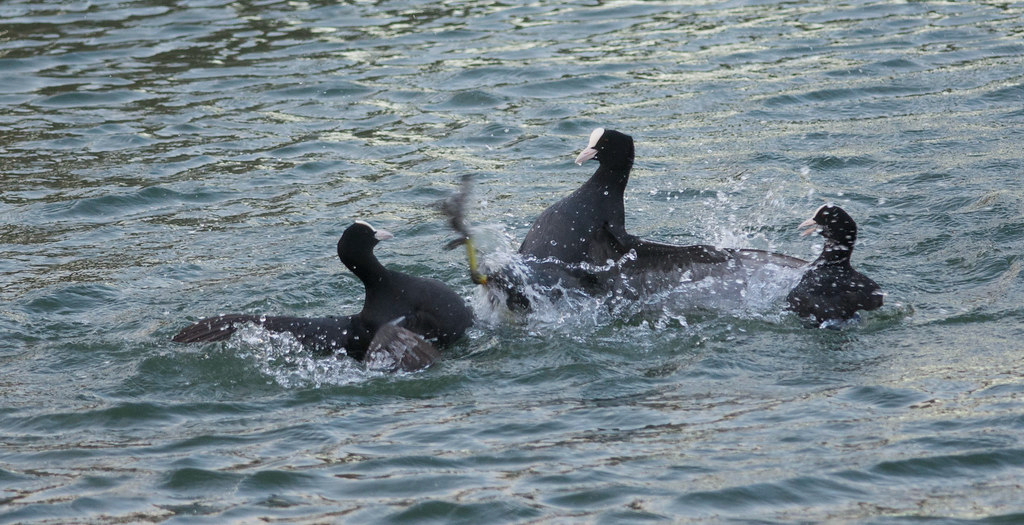
“Coot boxing match” by Wildlife Boy1 is licensed under CC BY 2.0.
The American coot is listed under “least concern” by the IUCN Red List of Endangered Species. They are common and widespread, and are sometimes even considered a pest. They are rarely the targets of hunters since their meat is not considered to be as good as that of ducks; although some are shot for sport, particularly in the southeastern United States. Because they are found in wetlands, scientists use them to monitor toxin levels and pollution problems in these environments.
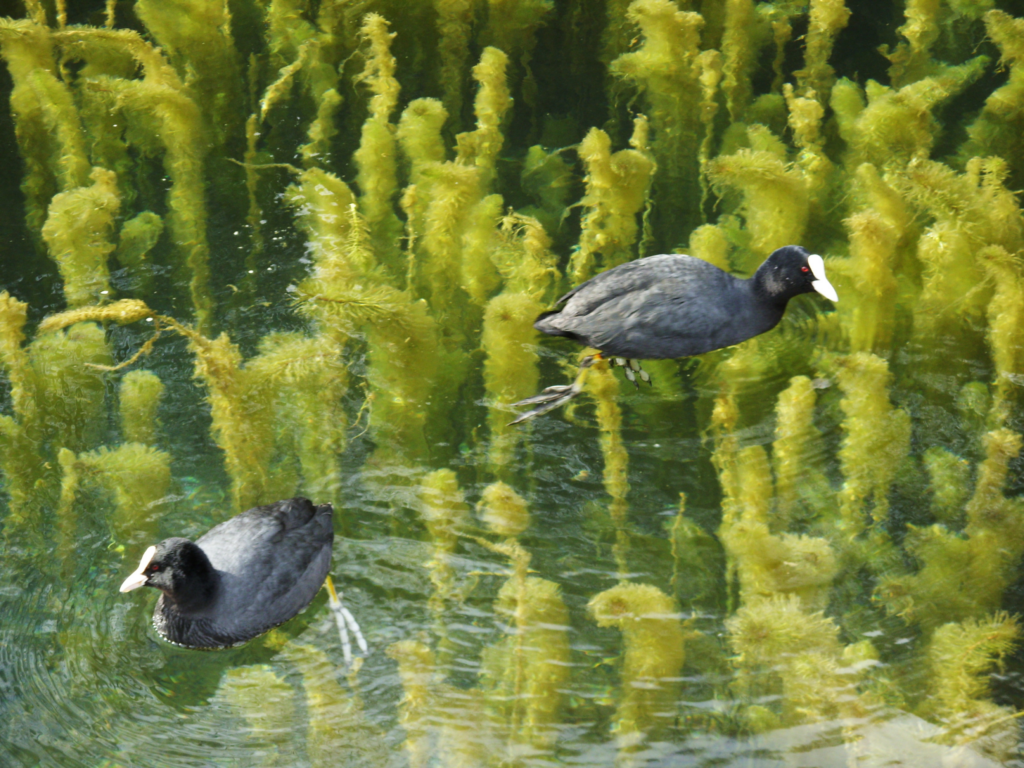
“Coots, Nailsworth – geograph.org.uk – 1746567” by Brian Robert Marshall is licensed under CC BY-SA 2.0.
Though commonly mistaken for ducks, American coots are only distantly related to ducks, belonging to a separate order. Unlike the webbed feet of ducks, coots have broad, lobed scales on their lower legs and toes that fold back with each step which facilitates walking on dry land.
You can watch the Coot in action right here in the video below:




